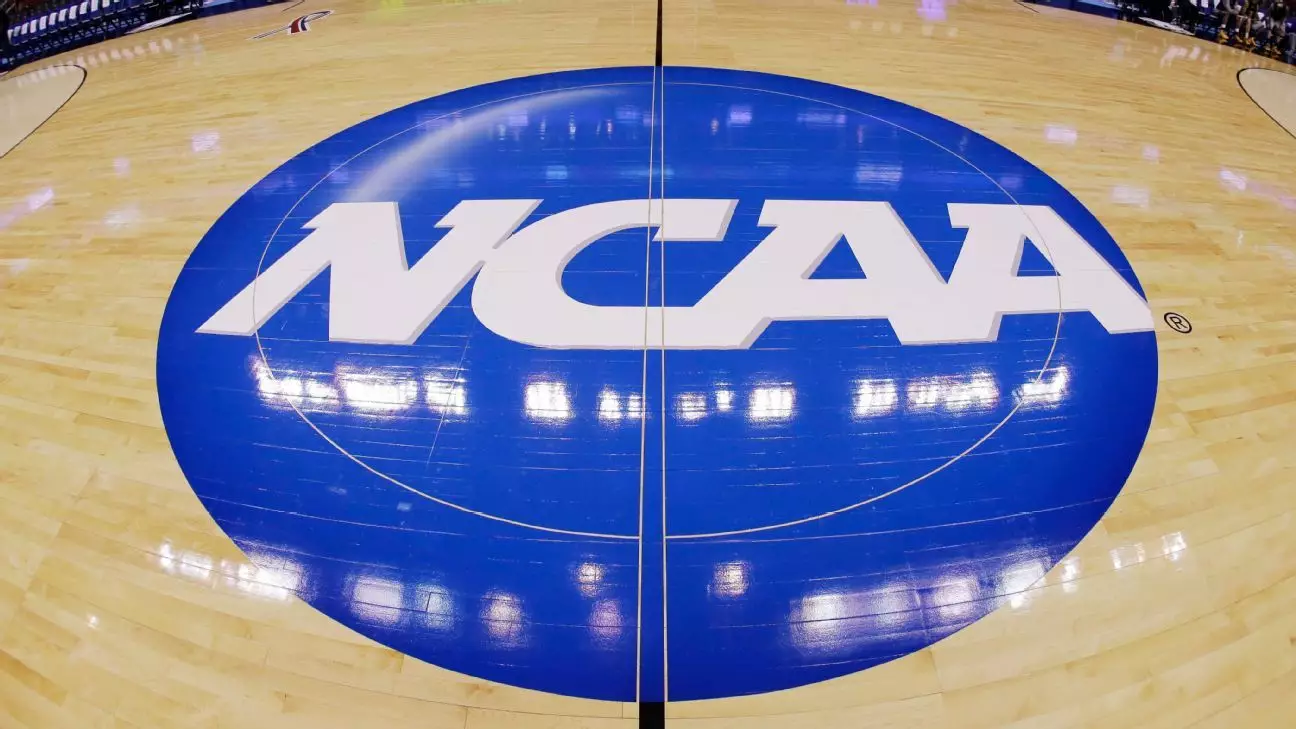In a groundbreaking moment for collegiate athletics, U.S. District Judge Claudia Wilken recently halted a billion-dollar antitrust settlement involving the NCAA, creating a cascade of reactions that underscore the complexities entwined in the business of college sports. The proposed settlement, a staggering $2.8 billion compensation package intended to address long-standing grievances that college athletes have faced regarding compensation and opportunities, now hangs in the balance due to one pivotal issue: the NCAA’s immediate implementation of roster size limitations. This decision surfaces as a double-edged sword, potentially protecting institutional interests at the cost of student-athletes’ futures.
Wilken expressed profound concern that the approach to roster limits—wherein teams could be forced to cut current players to adhere to new regulations—was fundamentally unjust. Athletes who have dedicated years of their lives to their sports could see their dreams dashed simply because a committee deemed it necessary to impose artificial constraints. This is a profound oversight; the law exists to protect the vulnerable, and in this instance, the student-athletes are being treated as commodities rather than individuals with aspirations and hard-earned commitments.
Compromise or Catastrophe? A Call for Equitable Change
In her order, Wilken intriguingly suggested a “grandfathering” approach that could allow current athletes to maintain their positions, arguing that any immediate roster cuts would cause irreversible harm. This perspective resonates deeply, considering the tumultuous nature of student-athlete lives, many of whom have already faced severe dislocation due to changes in team dynamics and scholarship offers in anticipation of these new rules.
The NCAA’s insistence on cutting roster sizes under the guise of fair competition is a flimsy argument at best. If their primary concern is indeed the equitable distribution of talent, they would be better served by addressing systemic issues within college sports instead of maneuvering to limit athletes outright. This sounds alarmingly like a power play shrouded in the rhetoric of “fairness,” but this could cost countless deserving athletes their chance at competition and success.
The proposed deal heralds an epoch of change, with schools poised to finally compensate athletes directly. Yet, this hope is overshadowed by the immediate threat of roster cuts only signaling a return to the status quo, where athletes remain at the mercy of institutions more concerned about maintaining control than empowering their futures. The NCAA has an obligation not just to uphold traditions, but to evolve alongside the shifting landscape of college athletics, prioritizing the welfare of those who are its lifeblood: the players.
Voices of Dissent and Personal Impact
The discontent surrounding the NCAA’s proposed roster limitations has been deafening. Athletes like Gannon Flynn, who shared his personal narrative before the court, have provided a human face to what is often a dry legal dialogue. Flynn’s situation exemplifies the broader implications of these roster changes, where individual lives are undeniably intertwined with athletic regulations. These are not just numbers on a spreadsheet or statistics in a report; they are young individuals facing the potential loss of their dreams due to administrative maneuvers.
While the NCAA’s spokesperson maintains continued optimism about the agreement, claiming it would increase opportunities for student-athletes, this declaration rings hollow in light of the realities painted by Wilken’s ruling. The association’s approach demonstrates a troubling disconnect between the organization and the very athletes it claims to support. As many conferences grapple with the implications of these changes amidst critical decision-making sessions, it is clear that this is not merely a legal ruling; it’s a clarion call for introspection regarding the ethics of collegiate athletics.
The Uneven Playing Field of College Sports
The NCAA’s insistence on establishing roster limits raises pressing questions about the organization’s commitment to fairness. Why should the potential for financial stability for schools should come at the expense of current athletes? Why should a process designed to empower player compensation also corral them into restricted circumstances? This contradiction illustrates a fundamental flaw in the NCAA’s approach, one that could set a dangerous precedent for how such organizations prioritize profit over principles.
Rodney King once famously asked, “Can we all just get along?” In this instance, the question is whether fairness can be ensured when profit-driven imperatives often eclipse the well-being of the very individuals that collegiate sports are built upon. As Wilken has indicated, a reevaluation of how roster size rules are enforced is crucial in honoring the integrity of student-athletes’ rights—a viewpoint undoubtedly held by many who resonate with the spirit of liberal ideals.
Athletic institutions, particularly those hauling in immense revenues, must grapple with the ethical implications of their decisions—the long-term ramifications often looming larger than the immediate benefits. In wrestling with the specter of roster limits, the hope is that key stakeholders can recognize the urgent need for transformative change. If the NCAA decides to prioritize competing interests over the rights and livelihoods of student-athletes, the future of college sports as a whole may be dire.


Leave a Reply